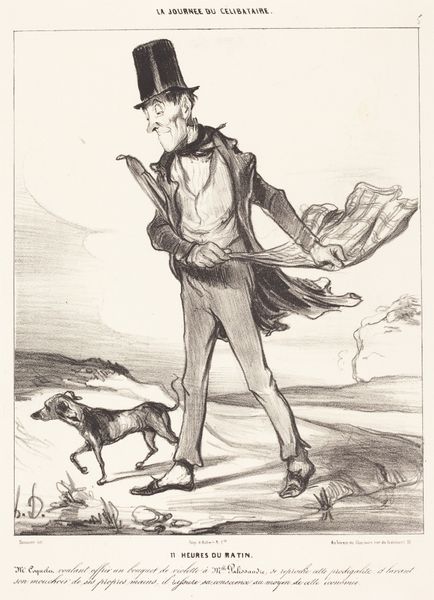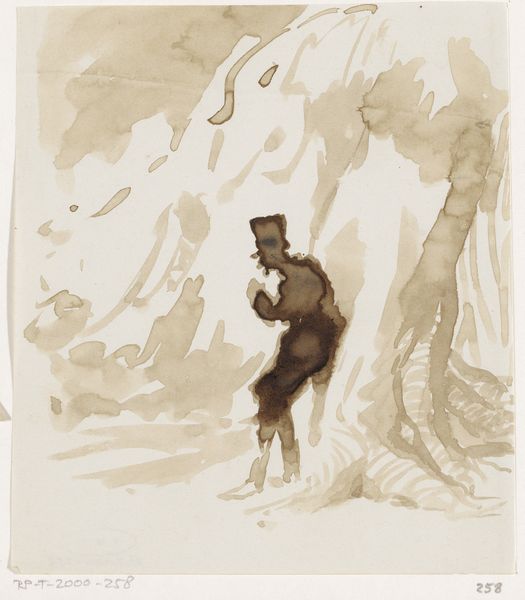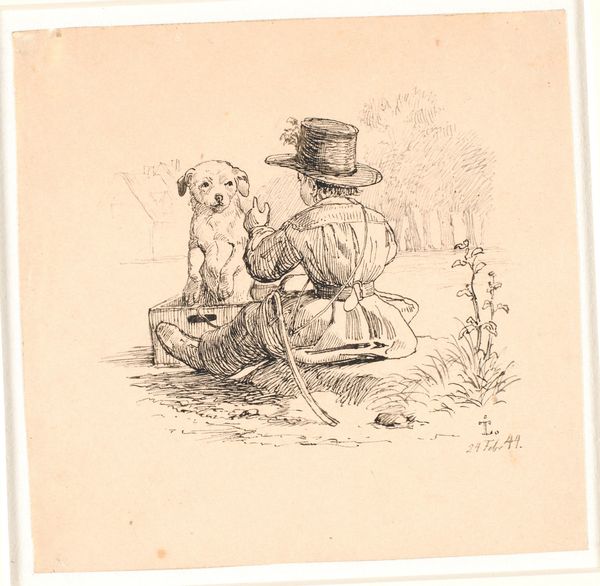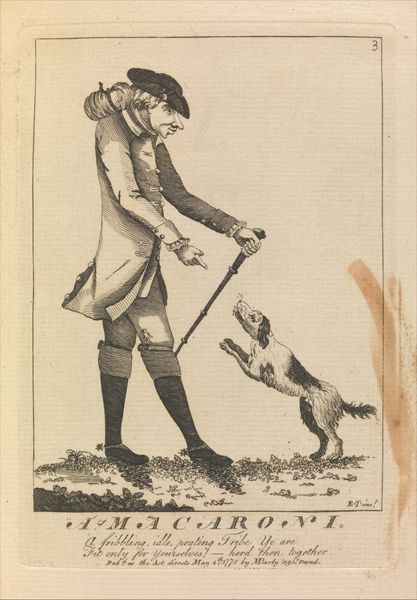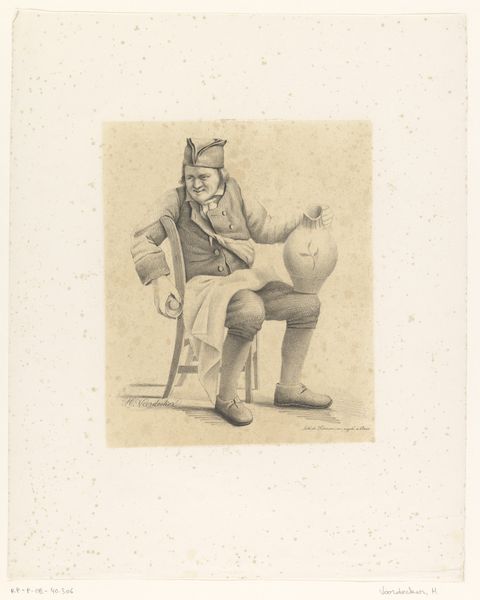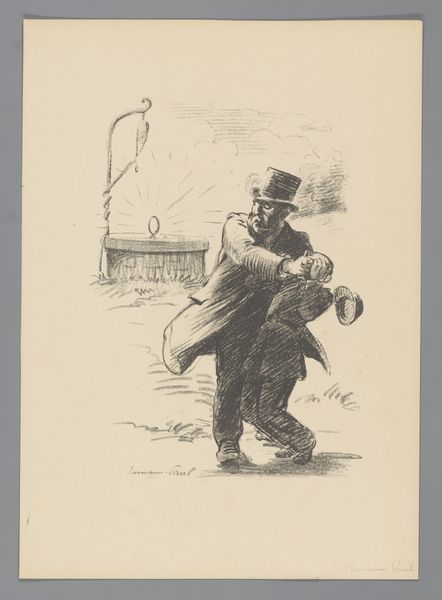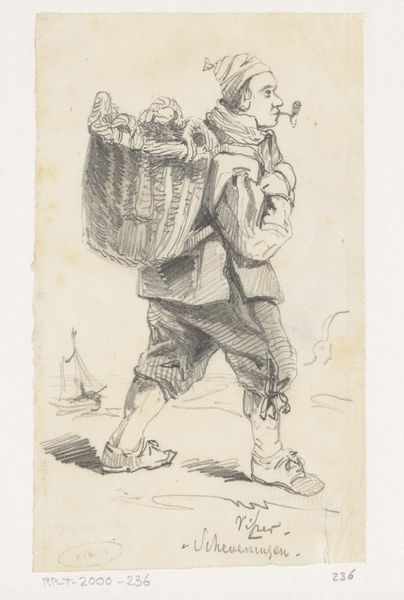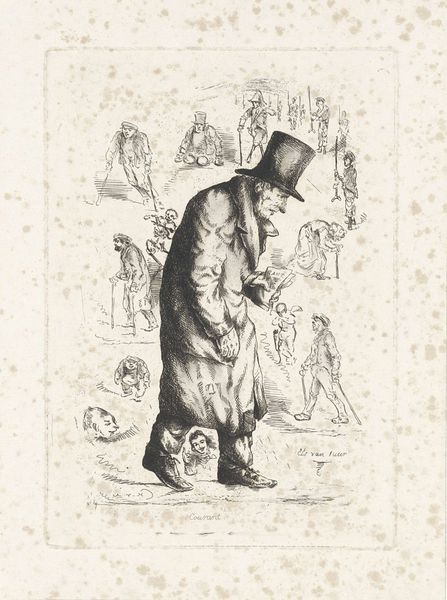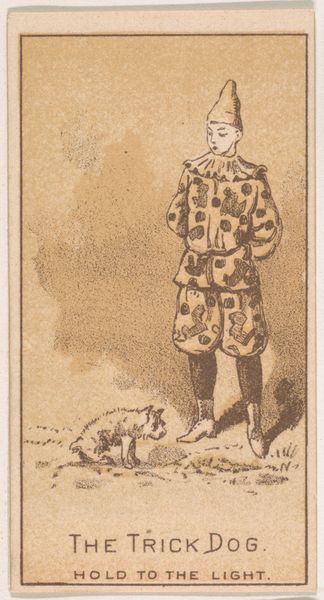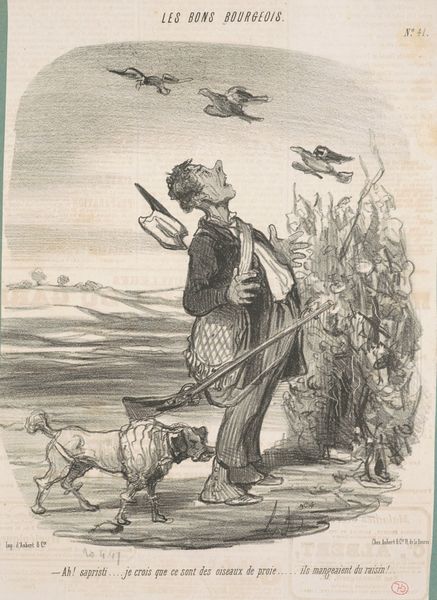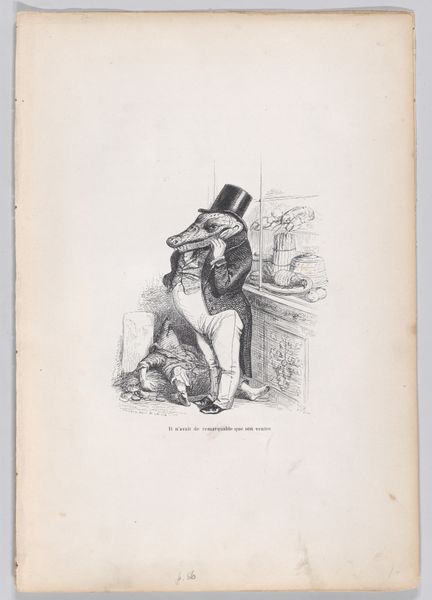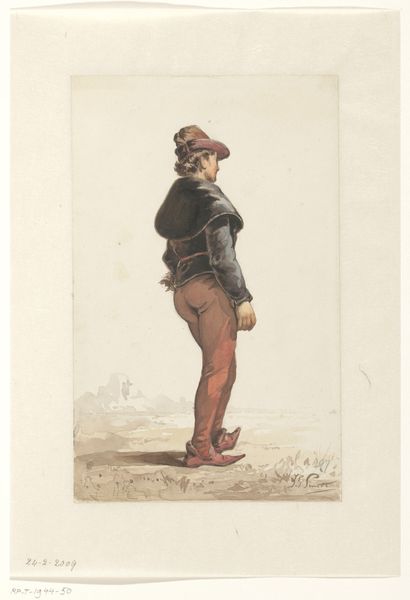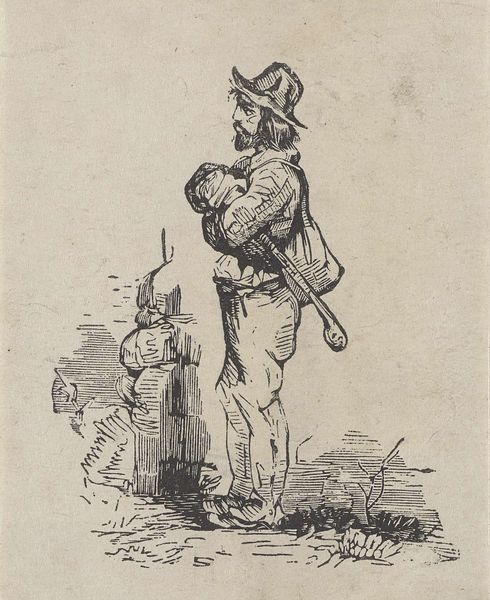
painting, watercolor
#
water colours
#
painting
#
caricature
#
dog
#
figuration
#
watercolor
#
genre-painting
#
realism
Dimensions: height 172 mm, width 95 mm, height 305 mm, width 223 mm
Copyright: Rijks Museum: Open Domain
Curator: I find this little watercolor work, dating from somewhere around 1850 to 1900, utterly charming. It's titled "Sandwichman aangevallen door twee honden"—"Sandwichman Attacked by Two Dogs." There’s an immediacy to it, despite the ambiguity of its creation date. Editor: My initial impression is chaos, but a humorous chaos. The energy of the dogs juxtaposed with the man’s almost weary resignation... it tells a story instantly. Is it a commentary, perhaps, on the plight of the working man? Curator: Certainly, there's a definite genre element at play here. Sandwich board men were common figures in the urban landscape of the era, visual tools within emerging advertising culture, often subject to public mockery. His slightly ragged attire suggests the sitter occupies the lower end of the economic ladder. He appears annoyed but, dare I say, unsurprised by his canine tormentors. Editor: Dogs often symbolize loyalty and protection, but here, those symbols are inverted, representing an almost feral societal element preying upon the individual. Their unruly energy stands in stark contrast to the geometric rigidity of the sandwich boards—what does their blankness amplify? Curator: Good question! I think their lack of message, oddly enough, enhances the universality of the scene. It's not about what he’s advertising, but about his social position. It highlights the power dynamic inherent in public spaces, and even suggests vulnerability exploited for comedic effect. Consider the caricatured features and exaggerated expressions... Editor: I'm also intrigued by the detail of what looks like an ornate walking stick. Does that represent an aspiration, a faint echo of higher status clashing with his current predicament? The contrast adds a layer of complexity. Curator: That's a keen observation! That detail does complicate a straightforward reading of mere victimhood. It adds an individual nuance and elevates it from pure caricature to something akin to a study of social aspiration despite economic adversity. The dogs then read as even more mocking—tearing at a symbol, not just a person. Editor: Yes, the overall scene becomes a playful jab at social climbing in some ways. Well, examining how symbols collide here offers up some very compelling narratives—it almost makes you feel a touch sympathetic for the beleaguered sandwich man, top hat and all. Curator: Indeed. It really encourages one to think about street life in the 19th Century.
Comments
No comments
Be the first to comment and join the conversation on the ultimate creative platform.
